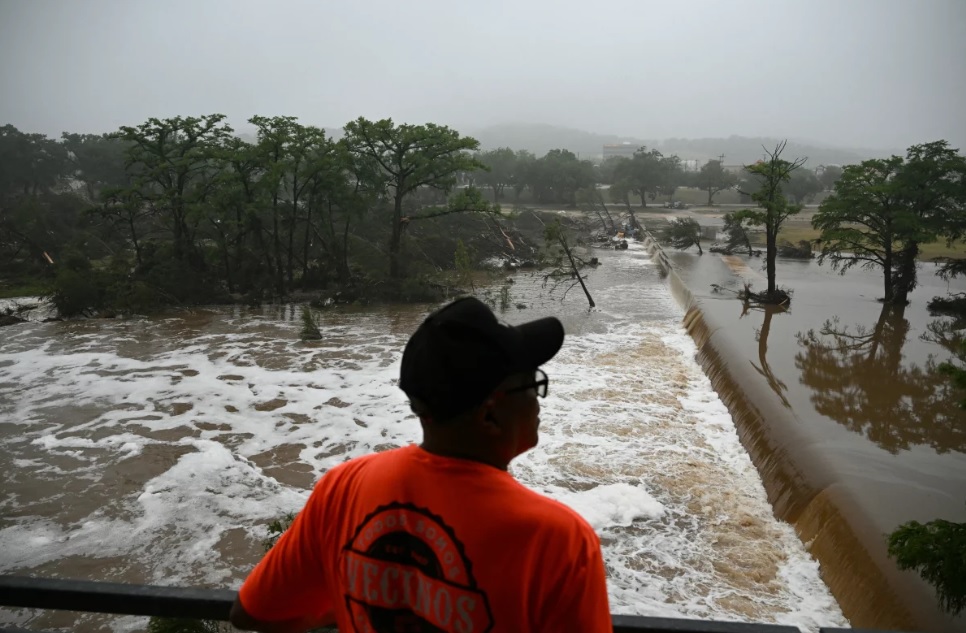The deadly Camp Mystic flood in Texas has left communities searching for answers: why were critical flood warnings ignored? At least 94 lives were lost, including 28 children, as torrential rains overwhelmed the Guadalupe River, catching local officials off guard despite years of discussions about warning systems.
New data reveals FEMA’s flood maps failed to account for major risks at the camp, where decades-old cabins sat in high-danger zones. Meanwhile, Hill Country’s unique topography amplified the disaster, highlighting the urgent need for better predictive tools.
Could AI-driven forecasting prevent future tragedies? Experts argue advanced technology might bridge gaps in traditional warning systems—but only if paired with swift action.
- The Texas flash flood disaster at Camp Mystic was described as a “worst-case scenario” by experts, with the Hill Country’s topography making it one of the most dangerous flash flood zones in the U.S.
- Despite National Weather Service flood warnings, rapid intensification caught officials off guard, and decades-old camp structures in high-risk flood zones exacerbated casualties.
- Critics question why FEMA flood maps and warnings weren’t acted upon sooner, as AI-driven forecasting is now proposed to improve future response times for such extreme weather events.
Community Reactions
コメントはまだありません
Why Were Texas Flood Warnings Ignored? Deadly Camp Mystic Flood Explained | How AI Could Improve Future Predictions
How did Camp Mystic flood happen? Worst Texas summer camp disaster explained
The tragic flooding at Camp Mystic in early July 2025 resulted from a catastrophic combination of torrential rainfall and rapid river rise along the Guadalupe River. According to reports, the floodwaters rose so quickly that escape became nearly impossible for some campers and counselors. The National Weather Service did issue warnings, but the speed of the flash flood outpaced emergency response capabilities.
Weather experts note that Hill Country rivers like the Guadalupe are particularly prone to sudden flooding due to the region’s topography and soil composition. The water runs off quickly into river channels, creating dangerous conditions within hours.






Why were Texas flood warnings ignored? The communication breakdown
Despite flood warnings being issued the night before and morning of the disaster, multiple factors contributed to inadequate response:
- Over reliance on automated alert systems
- Lack of personalized warning delivery to remote camp locations
- Failure to comprehend the speed and severity of potential flooding
- Insufficient historical flood data for specific river sections
The warnings might have been technically accurate but failed to convey the imminent danger effectively to decision-makers at the camp.
Comparing Texas and New Mexico flood responses
Recent back-to-back floods in Texas and New Mexico showed dramatically different outcomes, highlighting how preparation and warning systems make life-or-death differences. New Mexico’s flood response incorporated:
- Community-based warning networks
- Clear evacuation routes
- Regular emergency drills
Can AI really predict flash floods better? The future of flood warnings
Emerging AI technologies promise significant improvements in flood prediction through:
- Real-time analysis of soil saturation levels
- Hyper-local rainfall pattern recognition
- Automated evacuation recommendations
Researchers suggest AI systems could potentially predict flash floods with greater accuracy by analyzing vast datasets of historical flood events and current conditions.





How safe are other Texas summer camps? Parents want answers
In the wake of the Camp Mystic tragedy, parents across Texas are questioning the safety protocols at wilderness camps. Key concerns include:
- Emergency response times in remote locations
- Flood risk assessments for camp sites
- Staff training for extreme weather events
What FEMA missed: Exposure of floodplain mapping gaps
New analyses reveal that FEMA’s floodplain maps failed to identify significant risks at Camp Mystic’s location. The shortcomings included:
| Issue | Impact |
|---|---|
| Outdated river flow data | Underestimated potential flood heights |
| Inadequate terrain modeling | Missed rapid water rise scenarios |
Hill Country rivers: Beautiful but deadly danger zones
The Texas Hill Country contains some of the most dangerous rivers in America for flash flooding due to:
- Steep terrain accelerating water flow
- Thin soil layers limiting water absorption
- Unpredictable rainfall patterns


Would better phone alerts have saved lives? The tech debate
Many question whether advanced emergency alert systems could have prevented deaths at Camp Mystic. While useful, limitations exist:
- Some remote areas lack cell coverage
- Alert fatigue causes warnings to be ignored
- Standard alerts lack granular location-specific risk details



Learning from Camp Mystic: How to prevent future tragedies
The Camp Mystic disaster provides crucial lessons for improving outdoor program safety:
- Require multiple redundant warning systems
- Mandate flood evacuation drills at riverside camps
- Update FEMA maps annually using latest climate data
- Install automatic water level sensors at camps


